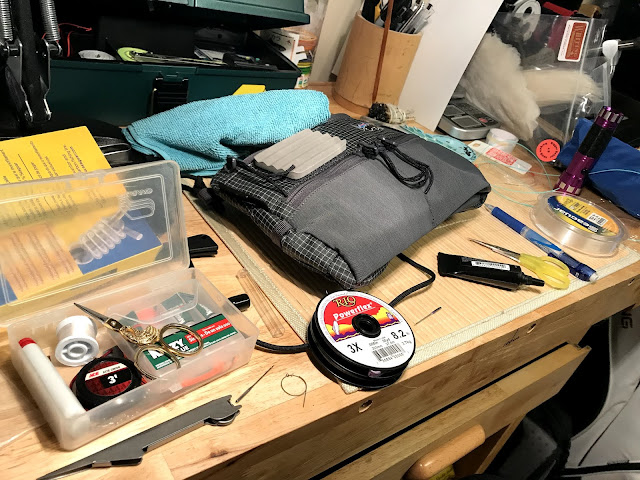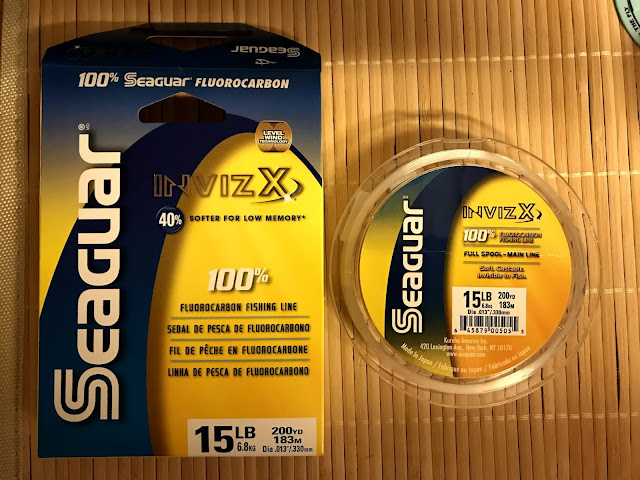 |
| Photo by Siegfried Forster |
 |
| Photo by Siegfried Forster |
 |
| Photo by Siegfried Forster |
For now, I will use this project to gather my thoughts into an organized system and work from there by returning to these thoughts and refining them. I do this with my pack lists up in this canyon by only using what is on the list and striking out items that I do not use and packing again only what is left in the list.
This keeps me focused.
I use only one rod, the Gamakatsu Suimu EX 5m, a long cork handled single hand rod that is exquisitely designed to cast a long level line, I use a #3.5 to have a little "punch" into the swirling canyon winds of the afternoon. The fish in my river are heavily pressured by spin fishers ripping spoons and streamers and also guided fly fishermen as well as adventuring anglers such as myself.
I use only one rod, the Gamakatsu Suimu EX 5m, a long cork handled single hand rod that is exquisitely designed to cast a long level line, I use a #3.5 to have a little "punch" into the swirling canyon winds of the afternoon. The fish in my river are heavily pressured by spin fishers ripping spoons and streamers and also guided fly fishermen as well as adventuring anglers such as myself.
 |
| Rigging lines, I always use my little kit |
 |
| Seaguar INVIZ X .330mm which equates to #3.5 Valcan |
 |
| I use card spools as they are flat and you can stack them |
It is funny, the quote I use, "the more you know the less you need" is from Yvon Chouinard and his company, Patagonia offers this "Wader Workstation" bag and it's twice the size of my tenkara bag. What is funny, my tenkara bag is half the size of this bag, I am much more experienced at tenkara in the mountain stream environment. My honryu tenkara is in the intermediate stage and I am still in the research and development throes. I am developing my techniques so I carry more, as my skill is strengthened, I will carry less. Right now, I carry far less into the canyon than I ever have in my 30 years of fishing here.
 |
| I put everything in this kit which I can use as a strap bag or hang on my waders |
Gamakatsu Suimu EX 5m
Seaguar Inviz X .330 7m line (tippet ring) x 2ea
Valcan #3.5 7m
Valcan #3.5 5m with markers
Fujino Soft Tenkara Long Type 7m
Floating Fly Line 8m
Dinsmore tin shot
Nipper on a fly line
Derf Needle Driver
Micro drop floatant (Gink)
Un-stick pads
Trouthunter Flourocarbon 5x - 6x - 7x
Wheatley Medium Black ripple foam fly box and specialized flys
Orvis Waterproof Compartment fly box with specialized flys and kebari
New Zealand indicator kit
Arrow indicator
Patagonia Middle Fork Packable waders
Patagonia Wader Workstation
The primary fish of the Colorado is a couple of different types of Rainbow trout with small numbers of Brown trout and even smaller numbers of Brook trout. There are a few different types of chubs and a couple of types of carp that live in the river. Almost all of the time you will catch two types of Rainbow trout with a rare catch of a Brown.
There are three basic presentations.
Drifting the bottom.
Sasoi in the water colum
Surface type
The techniques I use in the Colorado River in Glen Canyon have been developed from a knowledge of where the trout are depending on the varying flows released from the dam and the time of year or the amount of sunlight that affects the floura and fauna of the area. I choose to break up the year in seasons to make it easy. When I write about fishing there, I tag the title with the month of the year so I can refer to the article to others to know what to expect. Starting with winter, the rainbow trout that are my primary target are in the spawn. The females have made "redds" or depressions in the rocks and gravel and stay there protecting and nurturing their eggs. As we move into spring, the insects are starting to proliferate with huge hatches of midges or tiny black and white flying bugs that are larvae in the water (nymphs) and hatch out of the water. Summer can be a time of terrestrial fishing with grasshoppers and the cicada hatches, fall is a time of the start of the spawn. Through out the year, depending on the flows, there are scuds or tiny fresh water shrimp type bugs, tiny worms and small fish or streamers.
The purpose of this article is to begin separating my writing into the different areas that I practice tenkara, one in the mountains and in the headwaters and two, in the mainstream. I also practice tenkara techniques in ponds and lakes. Although this is not typical moving water, I do use the techniques of the rods and equipment there.
